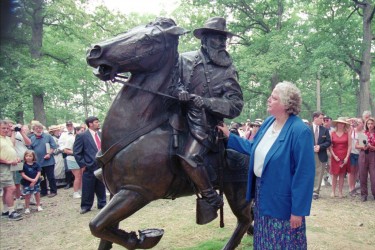Collection
Civil War Memory: Essays from The Washington Post's "Made By History"
Since the end of the Civil War, Americans have grappled with the meaning and memorialization of the conflict. Recent public debate has focused on monuments to Confederate soldiers throughout the country and their purpose in memorializing both the war's participants, as well as the meaning behind the Civil War. From Reconstruction to the present, this collection highlights how Americans have discussed the Civil War, and how we continue to confront this chapter of our collective history.
In 2017, Former Trump White House Chief of Staff John F. Kelly claimed that a "lack of compromise" led to the Civil War. This false claim continued the Lost Cause belief that Northern pressure on the South, not slavery, was the cause of the conflict. This piece highlights the great lengths the North went to in order to avoid war, even if that meant the continuation of slavery.
During the same remarks, White House Chief of Staff John F. Kelly referred to Robert E. Lee as "an honorable man." This piece describes the "bloody honor culture" of the Antebellum South that was utilized by Southern planters to enlist non-slaveholding whites to fight for the continuation of slavery.
Confederate General James Longstreet, known as "Lee's Old War Horse" during the Civil War, was quickly removed from Confederate lore after supporting Ulysses Grant for President in 1868 and refusing to accept the white supremacy tenets of the Reconstruction Era South. What can this tell us about the meaning behind Confederate monuments?
Confederate memory wasn't only expressed through monuments. 19th and 20th century American literature also preserved post-Civil War ideas of reconciliation between the North and South. One story, written by Harriet Beecher Stowe, shows the reality of Northern and Southern relationships after the Civil War.











